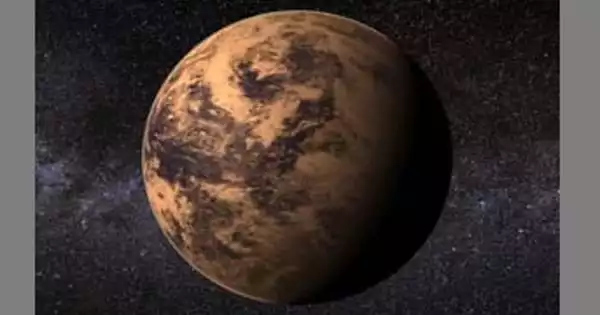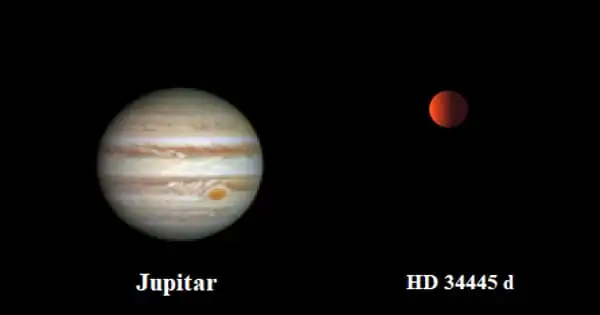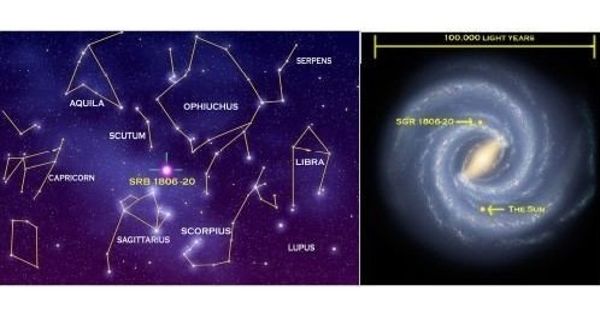Gliese 667 Cc is an exoplanet that circles an M-type star. It is an exoplanet orbiting within the habitable zone of the red dwarf star Gliese 667 C, which is part of the Gliese 667 triple star system and is located in the constellation Scorpius, approximately 23.62 light-years (7.24 parsecs; 223.5 trillion kilometers) distant. It has a mass of 3.8 Earths, takes 28.1 days to complete one circle around its star, and is 0.125 AU away from it.
The exoplanet was discovered using the radial velocity approach, which involves measuring radial velocity and observing Doppler shifts in the spectrum of the planet’s parent star. It was discovered in 2011 and was announced at the time. It has been designated as the most Earth-like object discovered outside of our solar system.
Physical characteristics
Gliese 667 Cc orbits its star every 28 days and is 0.125 AU distant. It is located within the habitable zone. It has 3.8 times the mass of the Earth. It is most likely approximately half the size of Earth.
GJ667Cc receives around 90% of the radiation flux that we receive from our Sun on Earth. Although the majority of this radiation is infrared (IR), it is most likely sufficient to support liquid water on the planet’s surface. The precise surface temperature is, however, imprecise and depends on a variety of unknown factors.
Mass, radius, and temperature
Gliese 667 Cc is a super-Earth, an exoplanet with a larger mass and radius than Earth but a smaller radius than the massive planets Uranus and Neptune. With a minimum mass of around 3.7 Earth masses, it is heavier than Earth. Gliese 667 Cc’s equilibrium temperature is calculated to be 277.4 K (4.3 °C; 39.6 °F). Depending on its composition, it is estimated to have a radius of about 1.5 REarth.
With an effective temperature of 3400 °C on its surface, the host star GJ667C is much cooler than our Sun, which has a surface temperature of 5500 °C. This red dwarf star, therefore, emits much less radiation than the Sun, reaching a luminosity of only just over one percent of the solar value.

Host star
The planet orbits a red dwarf (M-type) star named Gliese 667 C, orbited by a total of two planets. The star is part of a trinary star system, with Gliese 667 A and B both being more massive than the smaller companion. Gliese 667 C has a mass of 0.31 M☉ and a radius of 0.42 R☉. It has a temperature of 3,700 K, but its age is poorly constrained, estimates place it greater than two billion years old. In comparison, the Sun is 4.6 billion years old and has a surface temperature of 5,778 K.
This star’s outer atmosphere emits barely 1.4 percent of the Sun’s brightness. It is known to have a two-planet system; claims of up to seven planets have been made, but they may be incorrect due to a failure to account for correlated noise in the radial velocity data. Because red dwarfs emit little UV light, the planets are likely to receive very little ultraviolet radiation.
Gliese 667 Cc is the second confirmed planet beyond Gliese 667 C, orbiting at the inner limit of the habitable zone. The star would have an angular diameter of 1.24 degrees and appear to be 2.3 times the visual diameter of our Sun as seen from Earth’s surface. Gliese 667 C would have a viewing area 5.4 times that of the Sun, although it would still only occupy 0.003 percent of Gliese 667 Cc’s sky sphere or 0.006 percent of the visible sky when directly overhead.
The star’s apparent magnitude is 10.25, giving it an absolute magnitude of around 11.03. It is too dim to be visible with the naked eye from Earth, and even tiny telescopes cannot resolve it against the stronger light from Gliese 667 A and B.
Orbit
Gliese 667Cc’s orbit has a semi-major axis of 0.1251 astronomical units, making its year 28.155 Earth-days long. Based on its host star’s bolometric luminosity, GJ 667 Cc would get 90% of the light that Earth receives; nevertheless, a large portion of that electromagnetic radiation would be in the invisible infrared region of the spectrum.
















